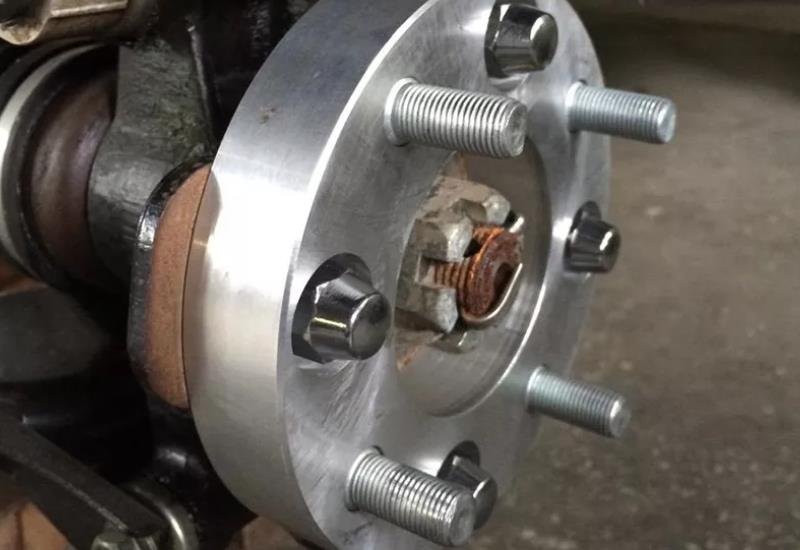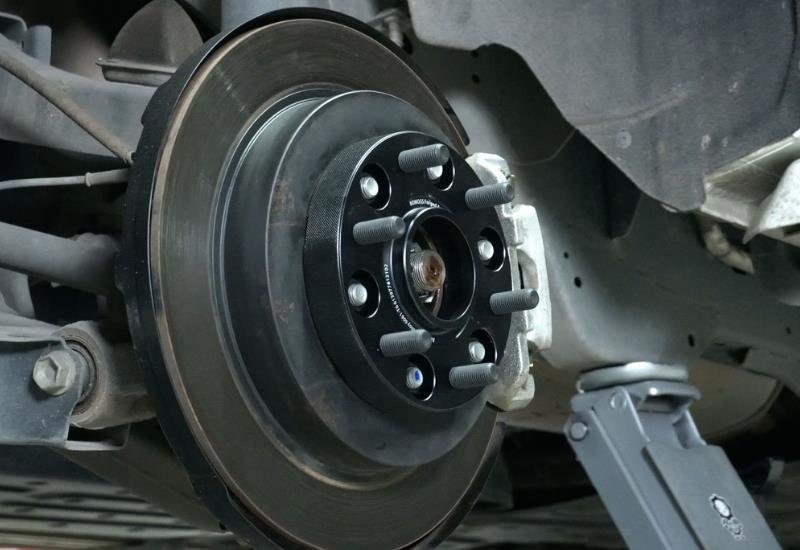A simple and inexpensive way to get your off-roading thrills is on an ATV. The machines add another pair of wheels to the dirt bikes they’re based on. And this makes a world of difference when tackling dirt trials and technical terrain. The wider stance and four wheels make for a more stable vehicle—one that’s more comfortable, easier to ride and equally capable on all surfaces and in any type of weather. Bigger UTVs also let you take a few friends for the ride and help in hauling all your gear on the job site and when out hunting.
Both vehicles can be accessorized beyond the limit. Hundreds of parts promise better performance, more agility and increased utility. But when it comes to improving the stability of you’re quad bike, there’s no simpler solution than a set of ATV wheel spacers. These increase the ATV’s footprint, essentially keeping riders and passengers safer by minimizing the risk of tipping over.
Table of Contents
ATV Wheel Spacer Basics

If you’re a newbie, then an ATV fitted with aftermarket spacers offers more security. The parts can be added to the front, rear or all wheels and widen the track, or how far apart the wheels are. They slot between the wheel hubs and wheels and are offered in different thicknesses to suit different riding styles and terrains.
The mod is a prerequisite for fitting bigger tyres (another way to increase stability) without having to change out axles and control arms for more complicated and ultimately more expensive gear. And possibly the best part, besides being dirt cheap, is that they are easy to install and even easier to get off when they’ve done their job.
Why They’re a Necessity
There are several reasons why you’d want spacers on your ATV or side-by-side:
Increased Stability
Wheel spacers increase the track from 1 to 6 inches, depending on the thickness you choose. This subtly or substantially raises the stakes in stabilizing your quad over different types of terrain and distributing the weight, so there’s a much lower chance of losing balance and tipping over. Spacers also make it easier to safely negotiate uneven terrain, especially in sharper turns, as well as fast inclines or descents. In short, they offer more control and are an easy way to build riding skills and confidence.
Going With Bigger Tires and Tire Chains
Tire clearance and suspension travel are two factors that determine where your ATV can go. With wheel spacers, there’s the ability to go with tires in different threads, such as mud tires for a little mudding fun, or bigger tire and wheel combinations when getting the quad higher off the ground. The components are the only safe way to use tire chains in loose sand or snow without damaging fenders, brake lines or suspension components.
Aesthetics
There’s no denying that the wider stance looks good and more aggressive. And with better performance and easy fitment, these are ATV accessories that get the thumbs up from all riders.
Low Price
Modified control arms and longer axles that do roughly the same job as ATV wheel spacers can run in the low to mid hundreds, depending on what you ride and what you’re looking for. By comparison, a full set of front and rear spacers in the most common thicknesses of 1 to 2 inches will cost less than a hundred dollars. And if you’ve spent more cash on your machine, cheaper yet practical quad bike additions are always welcome.
Are There Any Cons Worth Mentioning?
No upgrade or aftermarket accessory is perfect. Spacers need to be in the right thickness without going overboard with really wide units, Moreover, there’s a slight change to the steering feel, but something that you can get used to over time. Lastly, the changed geometry can mean more wear in related parts, like the axles, joints and steering pumps, but only on extra-wide wheel spacers. As with everything, moderation is key.
Choosing What’s Right

Getting ATV or UTV wheel spacers that match perfectly to your ride is a fairly simple process: Here’s what you need to look out for:
Bolt Patterns
This is defined as the number of lugs and the pitch circle diameter (PCD), or the distance between the centerlines of two opposing bolts or studs. The aim is to get a snug fit with the wheel hub with no wobble. Most quad bikes come with a 4, 5 or 6-bolt configuration, and the PCD varies from 100 to 156mm.
You’ll also need to consider bolt gauge, thickness and length. Many spacers have bolts that are 3/8-inch (10mm) thick and an inch (25mm) long, but you’ll also find bigger and longer variants, depending on the wheels you’re using.
Thickness
How wide is too wide? Spacers can be only half an inch thick (but still give an inch more track), or go on to be very wide. Most top out at three inches, resulting in an ATV or side-by-side with an additional 6 inches of track to play with. For the majority of the machines, though, and for most riding scenarios, varieties in 1, 1.5, or 2 inches should give you all the stability you need and enough space for just about any type of tire, with tire chains included.
Do Materials Matter?
Wheel spacers need to be durable, made to tight tolerances, and provide the performance you’d expect. Most are made of high-grade metals, including 6061 aluminum alloys or stainless steel.
Aluminum spacers are preferred for their low weight, corrosion resistance, good heat dissipation and decent strength. They’re better for high-speed runs, wadding through mud and water, harder braking and offer better overall performance when compared to steel spacers. These are crack-resistant and can take a beating, so more in tune with recreational or light work tasks, particularly in UTVs. They’re cheaper, too.
Buyers can also opt for more exotic materials, like titanium or composites, when looking for the best ATV wheel spacers out there. Besides materials, spacers also need to be machined for the exact fit, and many have coatings to resist the elements and add some style.
Regardless of what material you choose, compatibility is key, just as with all parts. Look for spacers in the right bolt pattern, ones that are thick enough to add the tires you need, and units that add more stability on the terrain you usually ride. As a performance upgrade, they’re inexpensive, offer a long set of practical and aesthetic benefits for the money, and are worth it.





